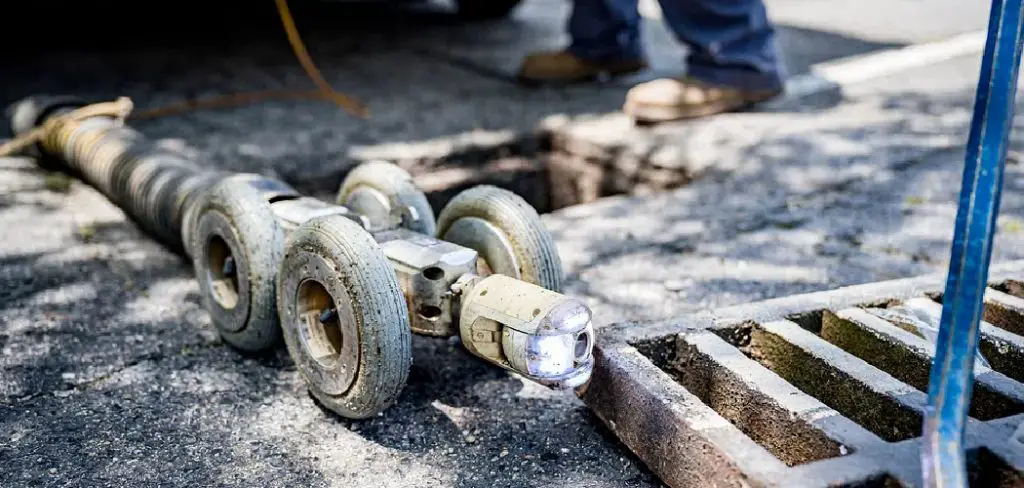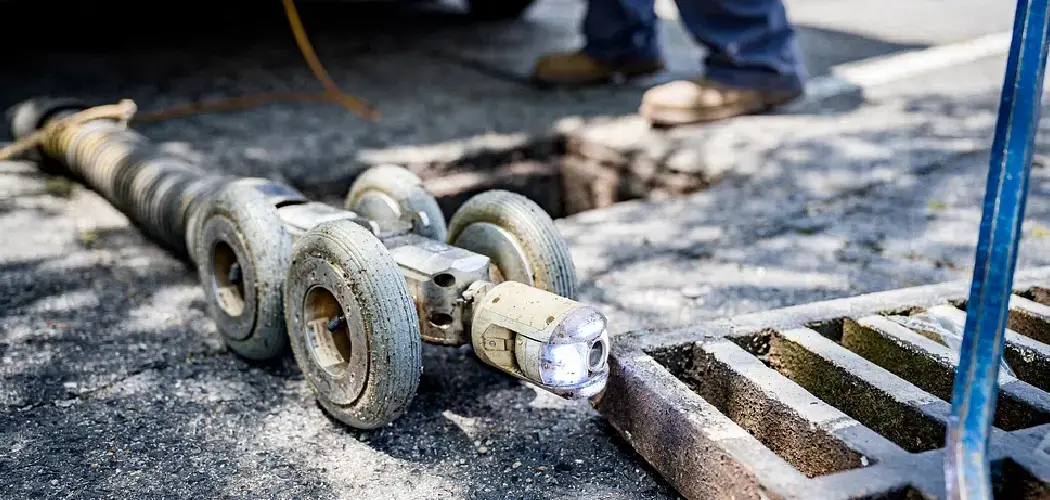Frozen sewer lines can lead to significant plumbing issues, resulting in backups and waste disposal problems that can disrupt daily life. As temperatures drop, the risk of your sewer line freezing increases, particularly in areas with harsh winter conditions.

Understanding how to effectively thaw a frozen sewer line is crucial for homeowners and maintenance professionals alike. In this guide, we will explore various methods for how to thaw frozen sewer line, helping to prevent costly repairs and ensuring your plumbing operates smoothly throughout the colder months.
Understanding Why Sewer Lines Freeze
Sewer lines are particularly susceptible to freezing when temperatures plummet, and there are several factors that contribute to this problem. One of the primary reasons is the depth of the sewer line; if it is not buried deep enough, it is more exposed to cold air, making it easier for the water inside to freeze. Additionally, insufficient insulation around the pipes can allow cold air to penetrate, further increasing the likelihood of freezing.
Another factor is the flow of water within the sewer line; stagnant or slow-moving water is more prone to freezing than actively flowing water. Lastly, severe weather patterns, such as prolonged cold snaps or heavy snow cover, can create environments conducive to frozen sewer lines. Understanding these factors can help homeowners take preventative measures to protect their plumbing systems during the winter months.
Risks of a Frozen Sewer Line
A frozen sewer line presents several risks that can lead to serious repercussions for homeowners. The most immediate concern is the potential for backups, which can result in raw sewage entering living spaces, creating health hazards and costly cleanup efforts.
Additionally, a blockage can lead to increased pressure within the plumbing system, risking burst pipes and extensive water damage. Another factor to consider is the impact on the sewage treatment process; when sewer lines freeze, it can disrupt the flow of waste to treatment facilities, potentially leading to environmental contamination.

Furthermore, prolonged freezing can deteriorate the structural integrity of the pipes themselves, necessitating expensive repairs or replacements.
10 Methods How to Thaw Frozen Sewer Line
1. Use of Hot Water
One of the most basic and effective methods for thawing a frozen sewer line is to flush it with hot water. This works best if you suspect that only a small section of the sewer line is frozen or if the blockage is near the entrance of the pipe.
To use this method, you’ll need access to the frozen section of the pipe, which may require removing a section of the pipe inside the house. Boil several gallons of water and carefully pour it down the drain, or use a garden hose to direct the hot water into the pipe. The hot water will slowly melt the ice, allowing water to flow through the pipe again.
2. Heat Tape or Heat Cables
Heat tape or heat cables are effective solutions for thawing frozen sewer lines, particularly if you can access the frozen section. These electric cables wrap around the outside of the pipe and provide direct heat to thaw the ice.
To use heat tape, wrap it around the frozen section of the sewer line, plug it in, and let it warm up. The heat generated will gradually melt the ice inside the pipe without causing damage. Be sure to follow the manufacturer’s instructions, as improper use of heat tape could pose fire hazards.
3. Plumbing Snake with Hot Water Attachment
A plumbing snake, also known as a drain auger, can be very effective for breaking up blockages in a frozen sewer line, especially if equipped with a hot water attachment. This tool is designed to navigate through the pipe, mechanically breaking up ice and pushing it out of the way.
To use this method, feed the snake into the sewer line until it reaches the frozen section. If your snake has a hot water attachment, connect it to a hot water source and allow the water to flow through the pipe as you work the snake.

4. Use a Sewer Jetter
A sewer jetter is a high-pressure hose designed to clear blockages from pipes by using powerful water jets. This method is particularly effective for stubborn ice blockages in sewer lines that are difficult to reach with other tools.
To use a sewer jetter, insert the nozzle into the sewer line and turn on the water. The high-pressure jets will force hot water through the pipe, breaking up and melting the ice along the way. This method requires specialized equipment, so you may need to rent a sewer jetter from a hardware store or hire a professional plumber to perform this task.
5. Space Heaters or Heat Lamps
If the frozen section of the sewer line is exposed and accessible, using space heaters or heat lamps can be an effective way to gradually thaw the pipe. These tools provide a steady stream of heat to the surrounding area, slowly melting the ice inside the pipe.
To use this method, position the space heater or heat lamp near the frozen section of the pipe, ensuring it is set up safely and away from any water or flammable materials. Leave the heater or lamp on for several hours, checking periodically to see if the water flow has resumed.
6. Increase Indoor Temperature
Sometimes the best solution to thaw a frozen sewer line is as simple as raising the temperature inside your home. By increasing the ambient temperature, you can help thaw pipes that are frozen near the foundation of your home or in unheated areas like basements or crawl spaces.
Turn up the thermostat and open cabinet doors to allow warm air to circulate around the plumbing. If the sewer line is located in a basement, consider using additional space heaters to raise the temperature in that specific area.

7. Plumber’s Torch
A plumber’s torch can be used to thaw a frozen sewer line, but it requires careful handling and is best suited for metal pipes. The open flame from the torch provides intense, localized heat, which can quickly melt ice inside a pipe.
To use a plumber’s torch, apply the flame to the outside of the frozen section of the pipe, moving it around constantly to avoid overheating one area. The heat will slowly transfer through the pipe and melt the ice inside. Be cautious not to use this method on plastic pipes, as the heat could warp or melt the material.
8. Chemical Drain Cleaners
Some chemical drain cleaners are designed to melt ice and clear blockages in pipes. These products often contain heat-generating chemicals that react when they come into contact with water, creating enough warmth to melt the ice.
To use a chemical drain cleaner, carefully follow the instructions on the product’s label. Pour the recommended amount of cleaner into the sewer line and allow it to sit for the specified amount of time. These products should be used sparingly and only as a last resort, as they can be harsh on your pipes and may damage your plumbing system if used incorrectly.
9. Using a Wet/Dry Vacuum
A wet/dry vacuum can be used to suction water and ice out of the sewer line, especially if the blockage is near the entrance of the pipe. This method works by creating enough suction to pull the ice or melted water out, allowing water to flow freely again.
To use this method, attach the vacuum hose to the drain and turn it on, using it to suck out any standing water and, if possible, some of the ice. This method is more effective for smaller blockages or when combined with other methods, such as pouring hot water down the pipe before vacuuming. It’s a relatively low-cost option that may provide a temporary solution until you can fully thaw the line.
10. Call a Professional Plumber
If your attempts to thaw the frozen sewer line have been unsuccessful or if you are unsure about using any of the methods described, it may be best to call a professional plumber. Professionals have access to specialized equipment, such as sewer cameras and high-powered jetters, that can locate and clear frozen blockages safely and efficiently.

A plumber can also assess whether the frozen pipe has caused any damage, such as cracks or leaks, and can offer more permanent solutions to prevent the problem from recurring. While this option may be more expensive than a DIY approach, it ensures that the issue is addressed properly and without risking damage to your plumbing system.
Conclusion
Thawing a frozen sewer line can be a challenging task, especially if the blockage is extensive or located in a hard-to-reach section of the pipe. However, with the right methods, such as using hot water, heat tape, sewer jetters, or space heaters, you can effectively thaw the ice and restore your plumbing system to working order. Always prioritize safety, wear protective gear, and carefully follow the instructions for any tools or chemicals you use. Thanks for reading, and we hope this has given you some inspiration on how to thaw frozen sewer line!

